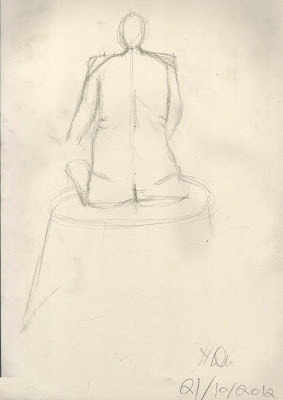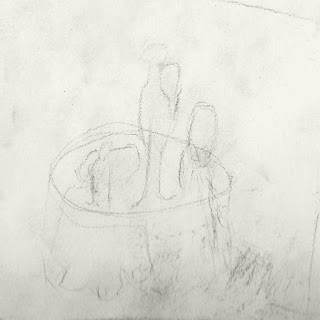in this drawing does show off the pose well and does have bit of detail such as the muscles in the neck, the chest such as hair and there seems to be some slight shading around the body. however there isnt enough shading around the body and makes the image very hollow. the arms seem far to skinny and don't show off any muscle at all and are far too straight. there seem to be a bit to much negative space between the legs. there is room for improvement such as adding more detail and shading this make the image look much more realistic and also adding in detail on the head, arms and feet.
anatomical study
the images below are anatomical study of certain parts of the body rather than the whole body. here we get more detail in the study and be able to see curves, lighting and bone structure of the model.
torso
here is a study of torso. the proportion on the body is right size, we get a good outline of the body and even the curve on the spine however the arms are to straight we don't really see the muscle and how the muscles curve. there is some good shading around the body and some nice detail in the skin such as on the spine, with the detail on spine and helps to show the curvature of the spine.
leg
here we have a study of a leg, we can see that this study has a lot more detail added compared to the previous study, such as curves of the calf muscles and detail such as shading and hair. the shading here is used to indicate the bones such as the ankle. there is some nice detail added such as the hair on the leg as well as little shading on the leg. however there could been bit more shading on the calf area.







































